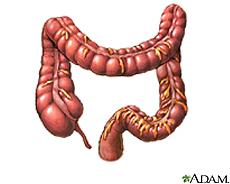NEW YORK (Reuters Health) - Australian researchers are challenging guidelines that urge diabetics to cut back on salt in their diet.

In a study that seems to turn conventional wisdom on its head, they found patients with the highest levels of sodium in their urine had the smallest risk of dying over a 10-year period.
"Such data call into question universal recommendations that all adults should endeavor to reduce their salt intake," Dr. Elif I. Ekinci of the University of Melbourne in Victoria and colleagues write in the journal Diabetes Care.
But don't reach for the pretzels just yet.
Although it isn't the first time findings like these have surfaced, the Australian researchers, like others before them, relied on observations only and didn't actually run an experiment to test the direct impact of eating more or less salt.
Instead, they followed 638 people with longstanding type 2 diabetes, often accompanied by heart disease and high blood pressure. At the outset of the study, all the patients were in their 60s on average and nearly half of them were obese.
"These are precisely the patients in whom more aggressive lifestyle interventions are often applied," the researchers note.
All the patients were treated at a single diabetes clinic, and doctors determined the daily amount of sodium in their urine when the study began. That's the gold standard of measuring salt intake, because it doesn't rely on patients remembering or jotting down what they ate.
The average amount of sodium in their urine, 4.2 grams per day, was in line with earlier global surveys, the researchers say.
Over the decade the study spanned, 175 patients died, mostly due to heart disease.
For every extra 2.3 grams of sodium in their urine, their risk of dying during the study dropped by 28 percent -- even after accounting for kidney disease, age and other factors likely to be important.
"This is unexpected," Dr. Ekinci and Dr. George Jerums, who also worked on the study, told Reuters Health by e-mail. "It raises the possibility that in people with type 2 diabetes, low salt intake is not always beneficial."
More than 23 million Americans have type 2 diabetes. According to the 2010 Dietary Guidelines for Americans, they should eat no more than 1.5 grams of sodium -- about two-thirds of a teaspoon of salt -- per day.
Most Americans consume more than twice that amount, U.S. government researchers said last year in a study that pointed to foods like pizza, cookies and meats as the main culprits.
At this point, nobody is recommending any change to the current dietary advice, because the new study doesn't prove that extra salt helps diabetics live longer.
The main problem is that the patients who had lower sodium levels in their urine were sicker and older, said Dr. Paul Elliott, who studies the link between diet and high blood pressure at Imperial College London.
"Although the authors used statistical models to try to 'correct' for these imbalances, it remains likely that the results are still confounded by them," he said.
That reasoning seems to be bolstered by the finding that higher blood pressure was tied to longer survival in the study, "which just isn't plausible," Elliott added in an email to Reuters Health.
But another expert said the Australian researchers might be onto something.
"The reality is that reducing sodium has many effects, some good like reducing average blood pressure, and others bad," said Dr. Michael H. Alderman of the Albert Einstein College of Medicine in New York.
For instance, he said, reducing sodium increases insulin resistance, which is the main problem in diabetes. It also ups the production of certain other hormones that have been linked to heart disease.
"The impact of reducing sodium must be the sum total of all these physiological effects," Alderman told Reuters Health in an e-mail.
To get to the bottom of the issue, a clinical trial comparing people told to eat less sodium to those who maintain their usual intake is necessary.
"It is surely safer, and probably cheaper than to ask 300 million Americans to reduce their sodium intake because of the hope that it will actually extend or improve life," Alderman said.
 Your small intestine does most of the digesting of the foods you eat. If you have a malabsorption syndrome, your small intestine cannot absorb nutrients from foods.
Your small intestine does most of the digesting of the foods you eat. If you have a malabsorption syndrome, your small intestine cannot absorb nutrients from foods.









 (Healthline News) -- People whose blood levels of bilirubin are on the high side may have a lowered risk for lung cancer, chronic obstructive pulmonary disease (COPD) and death from any cause, British researchers report. Bilirubin is a protein made as the hemoglobin in red blood cells breaks down. It is in excreted urine, and high levels may indicate certain diseases. It is responsible for the yellow color of bruises and the yellow discoloration in jaundice. Bilirubin may also have antioxidant and anti-inflammatory effects, which help protect cells, the researchers said.
(Healthline News) -- People whose blood levels of bilirubin are on the high side may have a lowered risk for lung cancer, chronic obstructive pulmonary disease (COPD) and death from any cause, British researchers report. Bilirubin is a protein made as the hemoglobin in red blood cells breaks down. It is in excreted urine, and high levels may indicate certain diseases. It is responsible for the yellow color of bruises and the yellow discoloration in jaundice. Bilirubin may also have antioxidant and anti-inflammatory effects, which help protect cells, the researchers said.










